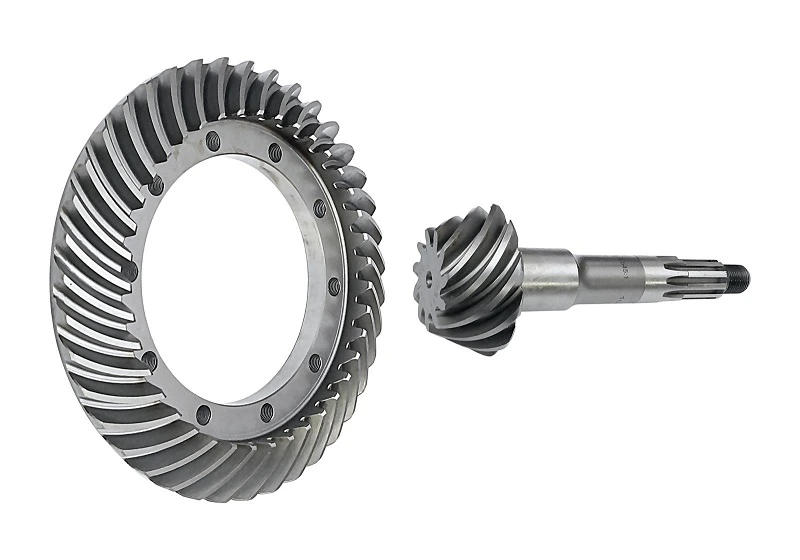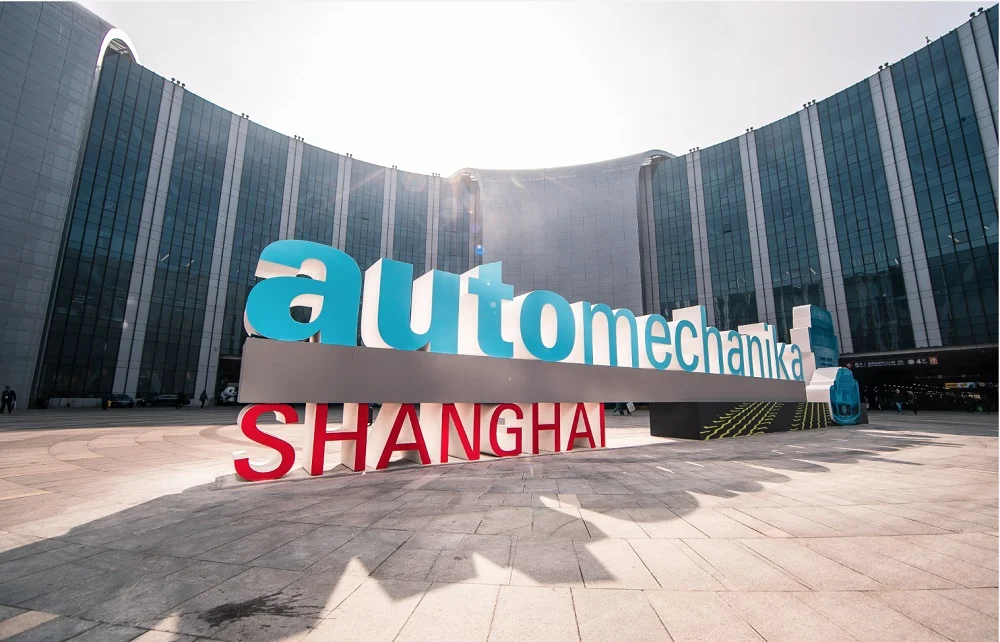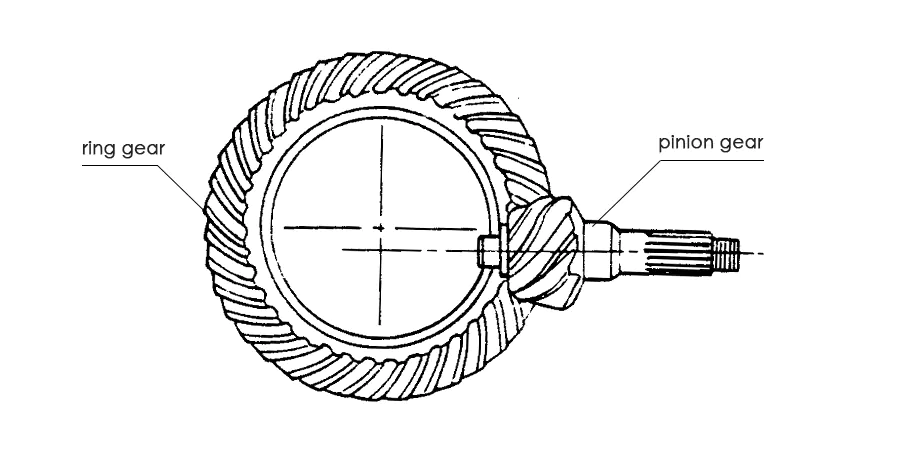Ring and pinion gears are at the heart of every automotive differential, yet many drivers rarely think about them until something goes wrong. For technicians, performance tuners, or anyone looking to make informed decisions about drivetrain components, understanding how these gears work is essential. This guide offers a clear, in-depth explanation of ring and pinion gears, the different gear types—including non-hunting gear sets—and the factors that influence performance and durability.

What Are Ring and Pinion Gears?
Inside the differential, the ring gear (a large circular gear) and the pinion gear (a smaller gear connected to the driveshaft) work together to transfer power from the engine to the wheels. The driveshaft spins the pinion gear, the pinion rotates the ring gear, and that motion ultimately turns the axle shafts.
Although this may sound simple, the interaction between the two gears determines how efficiently torque is delivered. Their tooth shape, gear ratio, contact pattern, and alignment all play critical roles in how a vehicle accelerates, tows, climbs, or maintains stability under load.
Why Ring and Pinion Gear Ratio Matters
- vehicle weight
- tire size
- driving environment
- performance goals
- transmission characteristics
Drivers who upgrade to larger tires often need a higher ratio to restore lost torque, while performance builds may use specialized ratios to optimize launch and acceleration.
How Ring and Pinion Gears Transmit Power
A key part of understanding ring and pinion gears explained is their role in changing the direction of rotational force. The gears meet at an angle, allowing power to turn 90 degrees from the driveshaft to the axle.
The tooth engagement must be smooth and consistent. If alignment is off even slightly, the gears can produce noise, vibrations, or accelerated wear. This is why setting pinion depth, backlash, and bearing preload correctly is essential during installation.
Types of Ring and Pinion Gears
1. Spiral Bevel Gears
These gears feature curved teeth that engage gradually. The smooth contact makes them suitable for quieter, more refined vehicles. They also distribute load more evenly across the teeth.
2. Hypoid Gears
- increased strength
- higher torque capacity
- reduced noise
- smoother gear mesh
Most modern rear-wheel-drive vehicles use hypoid gears because they handle heavy loads more effectively.
3. High-Performance Gear Sets
- hardened alloy steel
- specialized heat treatments
- modified tooth geometry
- tighter manufacturing tolerances
These upgrades make the gears better suited for racing, off-roading, or towing heavy loads.
Hunting, Non-Hunting, and Partial Hunting Ring and Pinion Gear Sets
One of the most important distinctions among gear designs involves how the pinion teeth contact the ring gear teeth during operation. This is where the terms hunting gear, non-hunting gear, and partial hunting gear come into play. These concepts can significantly affect wear patterns, noise levels, and gear longevity.
Hunting Gear Sets
- longevity
- consistent performance
- reduced noise
Because the load is not concentrated on specific teeth, hunting gears are common in passenger cars and vehicles requiring smooth, long-lasting performance.
Non-Hunting Gear Sets
- concentrated wear on specific teeth
- simpler gear manufacturing
- suitability for lower-speed or heavy-duty applications
Although non-hunting gears may wear faster in the areas of repeated contact, they are often chosen for equipment or vehicles where low cost and easy maintenance are more important than refinement.
Because “non hunting gear” is a specialized term, it attracts informed readers—often technicians or buyers seeking deeper technical insight—making it a valuable topic in drivetrain content.
Partial Hunting Gear Sets
These gear sets fall between the two extremes. Pinion teeth contact more than a few ring teeth, but not the entire ring gear. Wear is more balanced than non-hunting sets but not as evenly distributed as in hunting gears. Partial hunting gears are useful when designers want a blend of strength, reliability, and efficient manufacturing.
Contact Pattern and Alignment: Why Precision Matters
Even the strongest gear set can fail prematurely if installed incorrectly. The way the gear teeth meet—called the contact pattern—is one of the best indicators of proper setup.
- handle force efficiently
- run quietly
- avoid premature failure
Incorrect alignment shows patterns pushed too high, too low, too deep, or too shallow on the ring gear tooth face. Adjusting pinion depth or backlash is necessary to correct this.
- proper torque on the pinion nut
- correct bearing preload
- carrier shim selection
- smooth rotation without binding
Because ring and pinion gears operate under high load, even small errors can lead to noise, vibration, or immediate gear damage.
Common Problems and Their Causes
Gear Whine
Often caused by improper backlash or pinion depth. The pitch of the noise typically changes with vehicle speed.
Clicking or Clunking
Can indicate worn teeth, loose carrier bearings, or damaged spider gears.
Overheating
Results from insufficient lubrication or incorrect preload.
Metal Flakes in Differential Oil
A sign of accelerated wear; the gear set needs inspection or replacement.
Regular oil changes, inspection intervals, and correct setup during installation extend gear life significantly.
When to Upgrade Your Ring and Pinion Gears
- you’ve installed larger tires
- the vehicle tows heavy loads
- acceleration feels sluggish
- fuel economy has changed after modifications
- your build requires better strength or durability
Aftermarket gear sets designed for performance can dramatically improve torque delivery and drivability.
Why Content on “Ring and Pinion Gears Explained” Matters to Buyers
- mechanics seeking technical knowledge
- fleet owners researching durability
- off-road drivers preparing for upgrades
- performance tuners comparing gear types
Offering clear, authoritative explanations builds trust and positions your brand as a dependable resource in the drivetrain industry.
Conclusion
Ring and pinion gears may be hidden deep inside the differential, but they determine much of how a vehicle feels on the road. From selecting the correct ratio to choosing the right type—hunting, non-hunting, or partial hunting—these gears influence strength, noise, torque delivery, and overall drivability.
A well-designed and correctly installed gear set enhances performance for daily driving, off-road use, towing, or racing. Whether you’re maintaining a factory drivetrain or building something far more demanding, understanding these gears gives you the confidence to choose components that match your goals.
If you’re searching for high-quality, factory-produced ring and pinion gears, XJXPARTS manufactures durable gear sets for a wide range of applications. For inquiries or bulk orders, visit our Contact Us page anytime.



